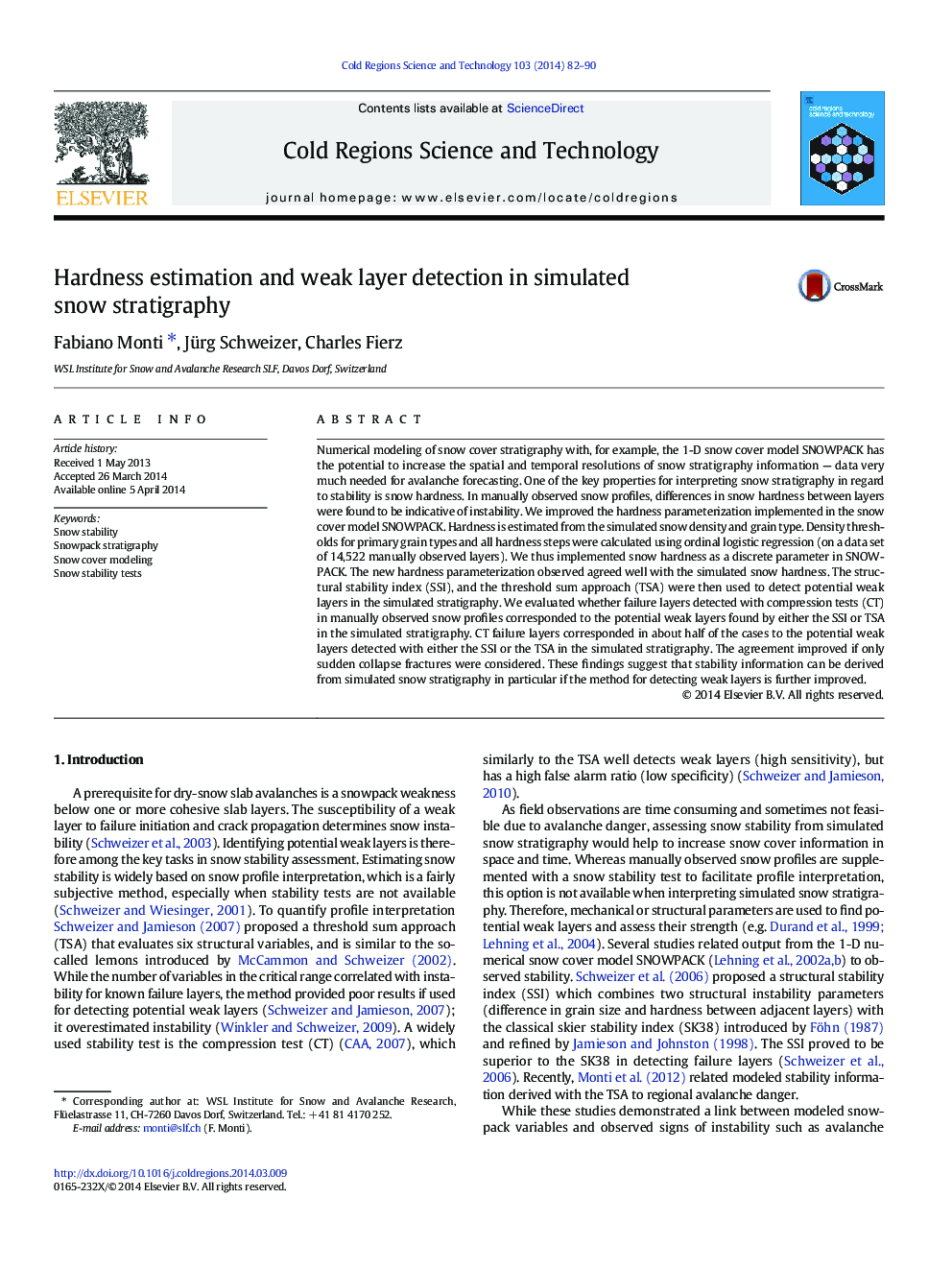| Article ID | Journal | Published Year | Pages | File Type |
|---|---|---|---|---|
| 6426928 | Cold Regions Science and Technology | 2014 | 9 Pages |
â¢We refined the snow hardness parameterization implemented in the model SNOWPACK.â¢We compared weak layers detected in the simulations with manually observed ones.â¢About the half of the observed weak layers was detected using the simulations.â¢The 80% of weak layers characterized by sudden collapse fractures were found.â¢Deriving snow stability information from simulated stratigraphy seems feasible.
Numerical modeling of snow cover stratigraphy with, for example, the 1-D snow cover model SNOWPACK has the potential to increase the spatial and temporal resolutions of snow stratigraphy information - data very much needed for avalanche forecasting. One of the key properties for interpreting snow stratigraphy in regard to stability is snow hardness. In manually observed snow profiles, differences in snow hardness between layers were found to be indicative of instability. We improved the hardness parameterization implemented in the snow cover model SNOWPACK. Hardness is estimated from the simulated snow density and grain type. Density thresholds for primary grain types and all hardness steps were calculated using ordinal logistic regression (on a data set of 14,522 manually observed layers). We thus implemented snow hardness as a discrete parameter in SNOWPACK. The new hardness parameterization observed agreed well with the simulated snow hardness. The structural stability index (SSI), and the threshold sum approach (TSA) were then used to detect potential weak layers in the simulated stratigraphy. We evaluated whether failure layers detected with compression tests (CT) in manually observed snow profiles corresponded to the potential weak layers found by either the SSI or TSA in the simulated stratigraphy. CT failure layers corresponded in about half of the cases to the potential weak layers detected with either the SSI or the TSA in the simulated stratigraphy. The agreement improved if only sudden collapse fractures were considered. These findings suggest that stability information can be derived from simulated snow stratigraphy in particular if the method for detecting weak layers is further improved.
